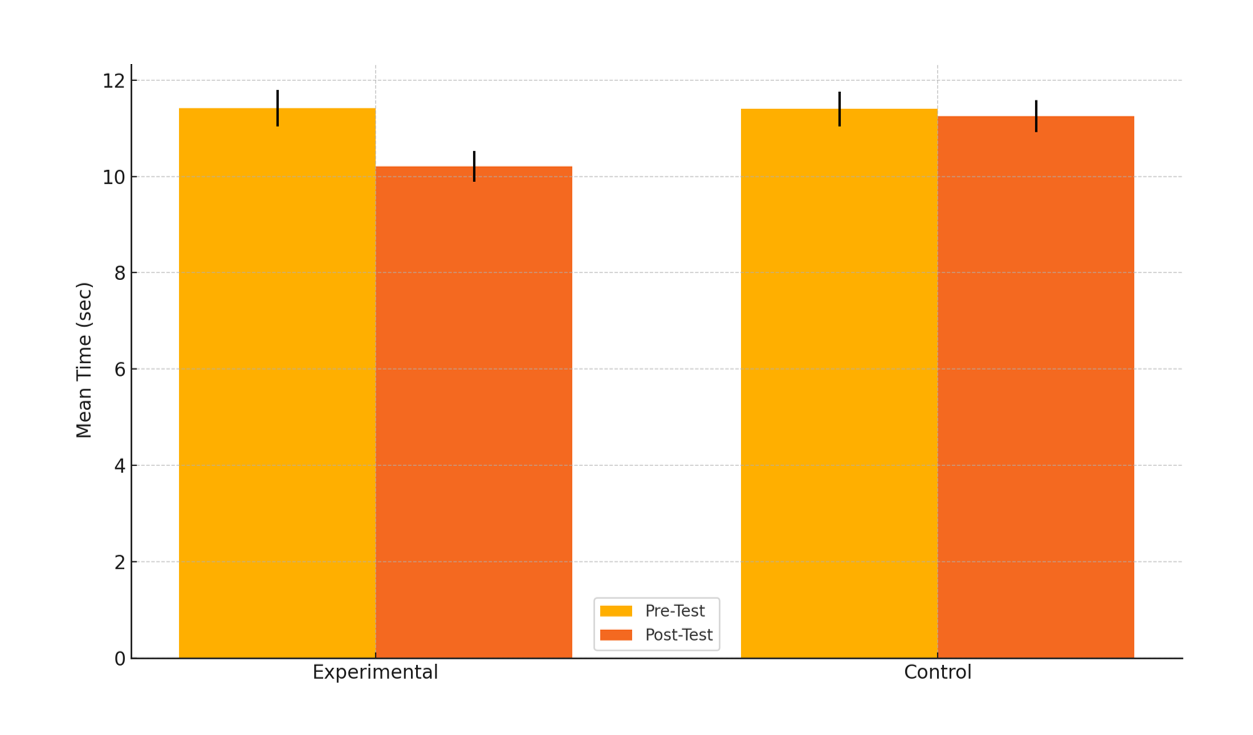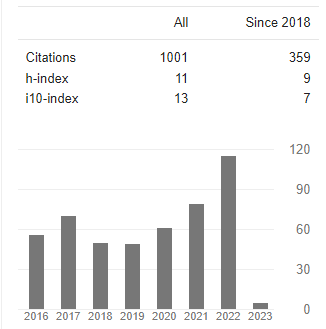Effect Of Plyometric-Weight Training And Specific Skill Training On Agility Of Beginner Fencers
Abstract
This study aimed to evaluate the effect of an 8-week plyometric-weight training combined with fencing-specific skill training on the agility of beginner fencers aged 10–19 years in Karnal District, Haryana. A total of 60 beginner fencers were purposively selected and randomly assigned into two equal groups: an experimental group (n=30), which received the integrated training intervention, and a control group (n=30), which continued with their standard training routine. The intervention was conducted three times per week over eight weeks and included periodized plyometric and light-resistance exercises along with fencing-specific footwork and reaction drills. Agility was assessed using the Shuttle Run Test from the AAHPER Youth Fitness Test (1976), both before and after the intervention. Descriptive statistics showed a marked improvement in post-test scores for the experimental group (M=10.21, SD=0.32) compared to the control group (M=11.25, SD=0.33). Analysis of Covariance (ANCOVA) was used to control for pre-test scores, and the results revealed a statistically significant difference between the groups (F=225.61, p<0.001). Post hoc analysis confirmed a significant mean difference of -1.04 seconds (p<0.001), favouring the experimental group. The findings support that combined plyometric-weight and sport-specific skill training significantly improves agility in beginner fencers. This study highlights the importance of structured, age-appropriate training programs in developing foundational physical qualities for fencing. The research provides practical insights for coaches and sports educators working at the grassroots level, emphasizing the need for integrating physical conditioning with technical skill development for optimal performance enhancement.
Downloads
References
AAHPER. (1976). AAHPER Youth Fitness Test Manual. Washington, D.C.: American Alliance for Health, Physical Education, and Recreation.
Baudry, S., & Duchateau, J. (2012). Postactivation potentiation in human muscle is not related to the type of maximal conditioning contraction. Muscle & Nerve, 36(1), 122–129. https://doi.org/10.1002/mus.20908
Bompa, T. O., & Haff, G. G. (2009). Periodization: Theory and methodology of training (5th ed.). Human Kinetics.
Chu, D. A. (1998). Jumping into plyometrics (2nd ed.). Human Kinetics.
Faigenbaum, A. D., Bellucci, M., Bernieri, A., Bakker, B., & Hoorens, K. (2005). Acute effects of different warm-up protocols on fitness performance in children. Journal of Strength and Conditioning Research, 19(2), 376–381.
Ford, P. R., De Ste Croix, M., Lloyd, R., Meyers, R., Moosavi, M., Oliver, J., Till, K., & Williams, C. A. (2011). The long-term athlete development model: Physiological evidence and application. Journal of Sports Sciences, 29(4), 389–402. https://doi.org/10.1080/02640414.2010.536849
Kumar, P., Singh, R., & Sharma, V. (2014). Effect of skill-specific training on selected motor fitness components of sub-junior fencers. International Journal of Physical Education, Sports and Health, 1(1), 22–24.
Markovic, G. (2007). Does plyometric training improve vertical jump height? A meta-analytical review. British Journal of Sports Medicine, 41(6), 349–355. https://doi.org/10.1136/bjsm.2007.035113
Miller, M. G., Herniman, J. J., Ricard, M. D., Cheatham, C. C., & Michael, T. J. (2006). The effects of a 6-week plyometric training program on agility. Journal of Sports Science and Medicine, 5(3), 459–465.
Myer, G. D., Ford, K. R., Brent, J. L., & Hewett, T. E. (2005). The effects of plyometric versus dynamic stabilization and balance training on lower extremity biomechanics. The American Journal of Sports Medicine, 34(3), 445–455. https://doi.org/10.1177/0363546505281241
Sheppard, J. M., & Young, W. B. (2006). Agility literature review: Classifications, training, and testing. Journal of Sports Sciences, 24(9), 919–932. https://doi.org/10.1080/02640410500457109
Singh, M., Kadhim, M.M., Turki Jalil, A. et al. A systematic review of the protective effects of silymarin/silibinin against doxorubicin-induced cardiotoxicity. Cancer Cell Int 23, 88 (2023). https://doi.org/10.1186/s12935-023-02936-4 https://cancerci.biomedcentral.com/articles/10.1186/s12935-023-02936-4
Mandeep Singh Nathial, Analysis of set shot in basketball in relation with time to perform the course and displacement of center of gravity, American Journal of Sports Science, Vol.2 Issue.5 pp: 122-126 (2014). Retrieved from https://www.sciencepublishinggroup.com/journal/paperinfo.aspx?journalid=155&doi=10.11648/j.ajss.20140205.13
Singh, M., Kour, R., & Kour, A.,. A collaborative diversified investigation of respective responses of sports person coaches and organizations on criminalization of doping.International Journal of Health Sciences,6(S3), 11295–11310. https://doi.org/10.53730/ijhs.v6nS3.8641
Singh, A., & Singh , D. M. (2013). PROMOTION OF RESEARCH CULTURE –ENHANCING QUALITY IN HIGHER EDUCATION. International Journal of Behavioral Social and Movement Sciences, 2(2), 202–208. Retrieved from https://ijobsms.org/index.php/ijobsms/article/view/152
SINGH, M., & SINGH SIDHU, A. (2016). A COMPARATIVE STUDY OF BODY COMPOSITION AND RELATIVE HEALTH STATUS AMONG RESIDENT AND NON-RESIDENT STUDENTS IN DIFFERENT SCHOOLS OF J&K. International Journal of Behavioral Social and Movement Sciences, 5(3), 08–13. Retrieved from https://ijobsms.org/index.php/ijobsms/article/view/320
Singh Nathial, D. M. (2012). ANALYZING THE CREDIT BASED SYSTEM IN PHYSICAL EDUCATION. International Journal of Behavioral Social and Movement Sciences, 1(3), 172–176. Retrieved from https://ijobsms.org/index.php/ijobsms/article/view/37
SHARMA, N. P., & SINGH, M. (2014). SENIOR AGE GROUP RELATIVE EXERCISES AND IMPACT ON THEIR LIFESTYLE. International Journal of Behavioral Social and Movement Sciences, 3(04), 78–82. Retrieved from https://ijobsms.org/index.php/ijobsms/article/view/246
Thomas, K., French, D., & Hayes, P. R. (2009). The effect of two plyometric training techniques on muscular power and agility in youth soccer players. Journal of Strength and Conditioning Research, 23(1), 332–335. https://doi.org/10.1519/JSC.0b013e318183a01a
Young, W. B., Dawson, B., & Henry, G. J. (2015). Agility and change-of-direction speed are independent skills: Implications for training for agility in invasion sports. International Journal of Sports Science & Coaching, 10(1), 159–169. https://doi.org/10.1260/1747-9541.10.1.159
Zemková, E., & Hamar, D. (2010). The effect of agility training on performance in sport-specific tests in female volleyball players. Acta Gymnica, 40(1), 33–38.

Copyright (c) 2025 Ankit, Usha Rani

This work is licensed under a Creative Commons Attribution 4.0 International License.














